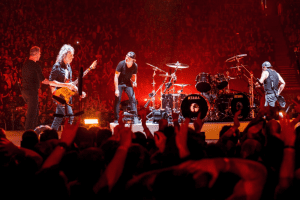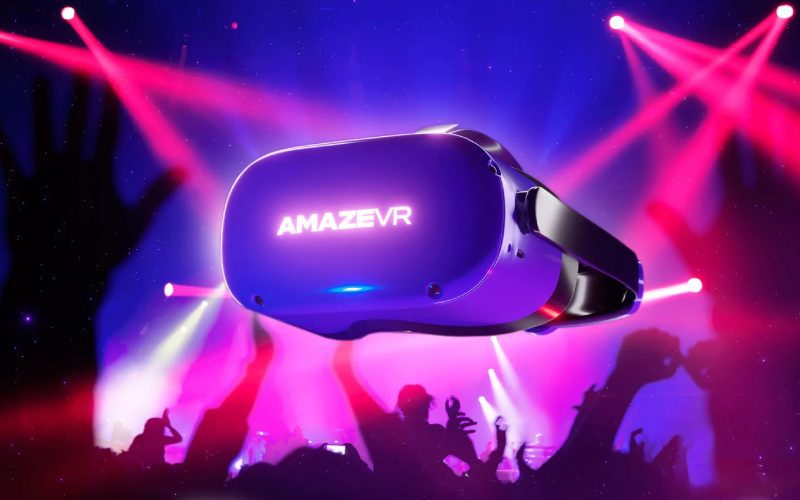Introduction
In recent years, the music industry has undergone a significant transformation, driven by advances in technology and changes in consumer behavior. One of the most notable developments has been the rise of virtual concerts. These digital events have opened up new avenues for artists to connect with their audiences, offering a fresh and innovative experience that transcends geographical boundaries. This article delves into the growth of virtual concerts, examining their evolution, impact, and future potential.
The Evolution of Virtual Concerts

-
Early Beginnings
The concept of virtual concerts is not entirely new. The idea of using technology to broadcast live performances dates back to the early days of radio and television. However, the true potential of virtual concerts began to emerge with the advent of the internet and digital streaming platforms. Early experiments with online concerts were often limited by technological constraints, such as low-quality video and audio, but they laid the groundwork for future innovations.
-
Technological Advancements
The rapid advancement of technology has been a key driver in the growth of virtual concerts. High-speed internet, improved streaming capabilities, and the proliferation of smart devices have made it easier than ever for audiences to access live performances from the comfort of their homes. Additionally, advancements in virtual reality (VR) and augmented reality (AR) have opened up new possibilities for creating immersive concert experiences that rival traditional live events.
-
The Impact of the COVID-19 Pandemic
The COVID-19 pandemic served as a catalyst for the widespread adoption of virtual concerts. With live events canceled and social distancing measures in place, artists and fans turned to digital platforms as a way to stay connected. Virtual concerts quickly became a lifeline for the music industry, providing a means for artists to perform and generate revenue while offering fans a much-needed source of entertainment during challenging times.
The Virtual Concert Experience

-
Accessibility and Inclusivity
One of the most significant advantages of virtual concerts is their accessibility. Traditional live events are often limited by factors such as location, ticket availability, and cost. Virtual concerts, on the other hand, can be accessed by anyone with an internet connection, regardless of their physical location. This inclusivity has allowed artists to reach a global audience, breaking down barriers and expanding their fan base.
-
Interactivity and Engagement
Virtual concerts offer a level of interactivity and engagement that is difficult to achieve with traditional live events. Many platforms incorporate features such as live chat, social media integration, and interactive elements that allow fans to engage with the performance and each other in real-time. Some virtual concerts even offer personalized experiences, such as virtual meet-and-greets and exclusive behind-the-scenes content.
-
Immersive Technologies
The use of immersive technologies such as VR and AR has taken the virtual concert experience to new heights. VR concerts allow fans to feel as though they are physically present at the event, with 360-degree views and spatial audio that create a sense of immersion. AR concerts, on the other hand, overlay digital elements onto the real world, enhancing the experience with visual effects and interactive features. These technologies have the potential to revolutionize the way we experience live music, offering a level of immersion and interactivity that is unparalleled.
The Economic Impact of Virtual Concerts

-
Revenue Streams for Artists
Virtual concerts have opened up new revenue streams for artists. In addition to ticket sales, artists can generate income through merchandise sales, sponsorships, and virtual meet-and-greets. Some platforms also offer monetization options such as tipping and pay-per-view, allowing fans to support their favorite artists directly. This diversification of revenue streams has been particularly important during the pandemic, providing a financial lifeline for many artists.
-
Cost Savings and Efficiency
From an economic standpoint, virtual concerts offer several advantages over traditional live events. The costs associated with touring, such as travel, accommodation, and venue rental, are significantly reduced or eliminated. This can result in substantial cost savings for artists and event organizers, making virtual concerts a more efficient and sustainable option. Additionally, the ability to reach a global audience can lead to increased ticket sales and higher overall revenue.
-
Supporting the Broader Music Industry
The growth of virtual concerts has also had a positive impact on the broader music industry. Digital platforms, streaming services, and technology providers have all benefited from the increased demand for virtual events. This has led to job creation and economic growth in related sectors, further highlighting the potential of virtual concerts as a driver of innovation and economic development.
Challenges and Considerations

-
Technical Challenges
While the growth of virtual concerts has been impressive, there are still several technical challenges that need to be addressed. Ensuring high-quality video and audio streaming, managing latency, and providing a seamless user experience are all critical factors that can impact the success of a virtual concert. Additionally, the use of advanced technologies such as VR and AR requires specialized equipment and expertise, which can be a barrier for some artists and event organizers.
-
Monetization and Revenue Models
Finding the right monetization and revenue models for virtual concerts is another challenge. While there are several options available, such as ticket sales, subscriptions, and sponsorships, determining the most effective approach can be complex. Additionally, the willingness of fans to pay for virtual events may vary, and pricing strategies need to be carefully considered to ensure a balance between accessibility and profitability.
-
Audience Engagement
Maintaining audience engagement in a virtual environment can be challenging. Unlike traditional live events, where the energy and atmosphere of the crowd play a significant role, virtual concerts rely heavily on digital interactions. Creating an engaging and interactive experience that keeps fans invested throughout the performance requires careful planning and innovative thinking. This includes leveraging social media, incorporating interactive elements, and providing exclusive content that adds value to the virtual concert experience.
The Future of Virtual Concerts

-
Hybrid Events
As the world gradually returns to normalcy, the future of virtual concerts is likely to involve a hybrid approach. Hybrid events, which combine in-person and virtual elements, offer the best of both worlds. Fans who prefer the traditional live experience can attend in person, while those who are unable to do so can still participate virtually. This approach not only expands the reach of the event but also provides greater flexibility and inclusivity.
-
Technological Innovations
The continued advancement of technology will play a crucial role in shaping the future of virtual concerts. Improvements in VR and AR, as well as the development of new technologies such as holography and artificial intelligence, have the potential to create even more immersive and interactive experiences. Additionally, the integration of blockchain technology and cryptocurrencies could revolutionize ticketing, merchandise sales, and fan interactions, providing new opportunities for artists and fans alike.
-
Long-Term Impact on the Music Industry
The rise of virtual concerts is likely to have a lasting impact on the music industry. As artists and event organizers continue to explore and innovate within the virtual space, new business models and revenue streams will emerge. The ability to reach a global audience and provide unique, personalized experiences will become increasingly important, driving further growth and development in the industry. Ultimately, virtual concerts represent a new frontier in live music, offering exciting possibilities for the future.
Conclusion
The growth of virtual concerts has transformed the way we experience live music, offering a new and innovative way for artists to connect with their audiences. Driven by technological advancements and changes in consumer behavior, virtual concerts have become an integral part of the music industry, providing accessibility, interactivity, and economic opportunities. While there are challenges to overcome, the future of virtual concerts is bright, with the potential to revolutionize the live music experience and shape the industry for years to come.












